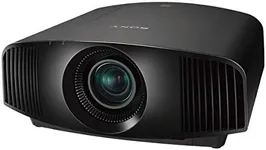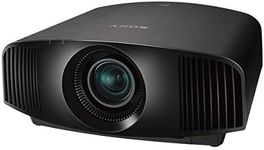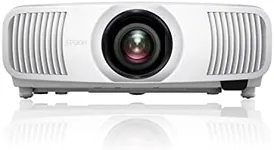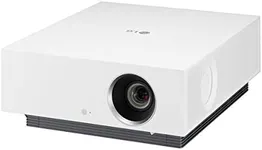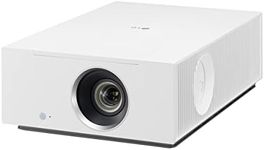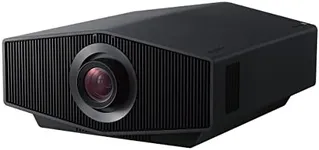Buying Guide for the Best Projector For Homes
Choosing the right projector for your home can significantly enhance your viewing experience, whether it's for movies, gaming, or presentations. The key is to understand the various specifications and how they align with your specific needs. By focusing on the right features, you can ensure that you get the best performance and value from your projector.ResolutionResolution refers to the number of pixels that make up the image on the screen. Higher resolution means more detail and clarity. Common resolutions include 720p (HD), 1080p (Full HD), and 4K (Ultra HD). For general home use, 1080p is often sufficient, providing clear and sharp images. However, if you want the best possible picture quality, especially for a large screen or detailed content, a 4K projector is ideal.
BrightnessBrightness is measured in lumens and indicates how bright the projector's image will be. This is important because it affects how well the image can be seen in different lighting conditions. For a dark room, 1500-2500 lumens is usually enough. For rooms with some ambient light, look for 2500-4000 lumens. If you plan to use the projector in a well-lit room or outdoors, you may need 4000 lumens or more.
Contrast RatioContrast ratio measures the difference between the darkest and brightest parts of the image. A higher contrast ratio means deeper blacks and more vibrant colors, which enhances the overall picture quality. For home use, a contrast ratio of at least 10,000:1 is recommended. If you are a movie enthusiast or plan to watch a lot of high-definition content, look for a projector with a higher contrast ratio for the best experience.
Throw DistanceThrow distance is the distance between the projector and the screen. It determines how large the image will be at a given distance. Projectors are categorized into short throw, long throw, and ultra-short throw. Short throw projectors can create a large image from a short distance, making them ideal for small rooms. Long throw projectors require more space but can project larger images. Ultra-short throw projectors can be placed very close to the screen, which is great for tight spaces.
Lamp LifeLamp life indicates how long the projector's lamp will last before it needs to be replaced. This is measured in hours. Longer lamp life means less frequent replacements and lower maintenance costs. For home use, a lamp life of 10,000 hours or more is ideal. If you plan to use the projector frequently, look for models with extended lamp life or consider LED or laser projectors, which typically have longer lifespans.
ConnectivityConnectivity options determine how you can connect your projector to other devices. Common connections include HDMI, USB, VGA, and wireless options. HDMI is the most versatile and widely used, providing high-quality audio and video. Ensure the projector has enough HDMI ports for your needs. If you plan to stream content wirelessly, look for projectors with built-in Wi-Fi or Bluetooth capabilities.
Keystone CorrectionKeystone correction helps to adjust the image if the projector is not perfectly aligned with the screen, ensuring a rectangular image. This is important if you cannot place the projector directly in front of the screen. Look for projectors with both vertical and horizontal keystone correction for maximum flexibility. If you have a fixed setup, this feature may be less critical, but it's useful for portable or temporary setups.

